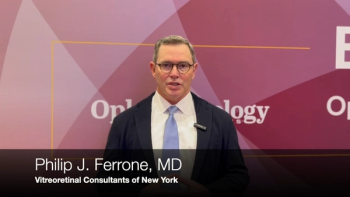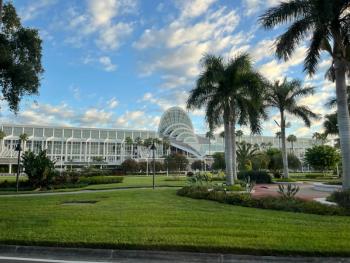
Ocular rigidity may affect corneal biomechanics after refractive surgery
San Francisco-During the past year, researchers have been diligently studying how refractive surgery affects corneal biomechanics. One of the major factors that affect the biomechanics of the cornea is total eye rigidity, according to Ioannis G. Pallikaris, MD, who spoke during the Innovator's Session at the American Society of Cataract and Refractive Surgery annual meeting.
Total eye rigidity is defined as "the parameter of the eye that expresses the elastic properties of the eye globe. In 1937, Friedenwald described ocular rigidity as a 'measure of the resistance, which the eye exerts to distending forces,' " said Dr. Pallikaris, professor and chairman of the department of ophthalmology, University Hospital, Heraklion, Crete, Greece.
To demonstrate the effect ocular rigidity can have on ectasia after refractive surgery, Dr. Pallikaris showed an illustration of an eye under a continuously pulsating tension stress. As the cornea becomes thinner after the ablation, the stress plus the IOP can affect the extension of the cornea.
Because the cornea is a living structure, it is under a continuously fluctuating pressure load due to the blood flow in the choroid. Ocular rigidity will affect the amplitude of this pressure fluctuation, he noted.
Dr. Pallikaris showed how IOP climbed in eyes with microvolumes of saline injected with an instrument to measure ocular rigidity. The IOP was continuously monitored and recorded, and the rigidity was calculated as a slope of pressure-volume curve. Patients undergoing cataract surgery received the microvolumes of saline through a small butterfly needle inserted into the anterior chamber before phacoemulsification.
In the eyes with low ocular rigidity, there was a specific increase of IOP. In eyes with high ocular rigidity, the IOP increase was higher.
"A certain blood volume comes into the eye with every heart beat," Dr. Pallikaris said. "In the eye with low rigidity, we have a certain IOP increase. In the eye with high rigidity, for the same blood volume, we have a higher IOP increase. So it is important how the rigidity may affect the IOP on the same blood volume that comes in the eye."
Ocular rigidity varies within the population. From this experiment, he found ocular rigidity to be a parameter that fluctuates for any given eye. Dr. Pallikaris then poses the question: "What is the correlation between ocular rigidity and corneal stress?"
In another experiment, 10 rabbits underwent PRK correction of 10 D in one eye and the other eye served as the control. Ocular rigidity was measured with the same instrument that was used in the patients undergoing cataract surgery. He found that PRK had a tendency to lower the ocular rigidity but this was not statistically significant.
"In a uniform system, we have a direct correlation between the thickness of the cornea and the change of the rigidity," Dr. Pallikaris said. "But the eye is not like that. With high myopia, most have thin scleras with staphylomas. We have the lamina cribrosa, which can possibly absorb the pressure fluctuations from the pulsatile blood inflow. So this change here cannot be only calculated from the thickness of the cornea, but it is the whole system behind which may affect these changes."
While ocular rigidity is not directly related to corneal biomechanics, it has a role in modulating the characteristics of corneal stress.
"The possible rigidity in keratectasia needs to be further investigated," he said.
Previous work
Dr. Pallikaris and his colleagues recently published a report in the American Journal of Ophthalmology comparing the ocular rigidity in patients with neovascular age-related macular degeneration (AMD) versus patients with dry AMD. The pressure-volume relation and the ocular rigidity coefficient were compared in 16 patients with wet AMD, 16 patients with the dry form of AMD, and 44 cataract-surgery controls.
The patients with dry AMD had less ocular rigidity than those with wet AMD.
Newsletter
Don’t miss out—get Ophthalmology Times updates on the latest clinical advancements and expert interviews, straight to your inbox.



















































.png)


